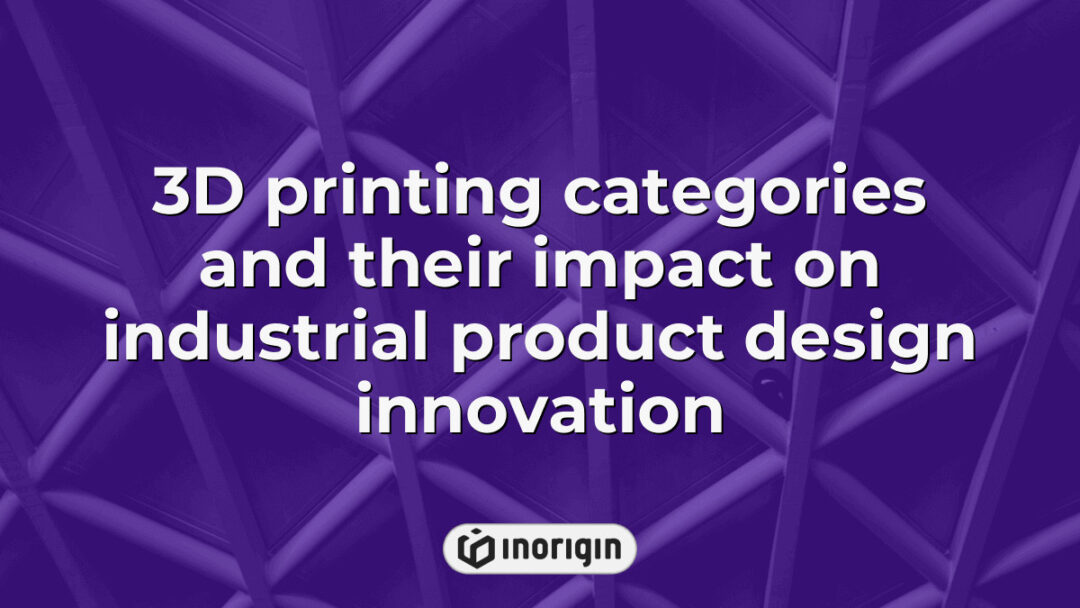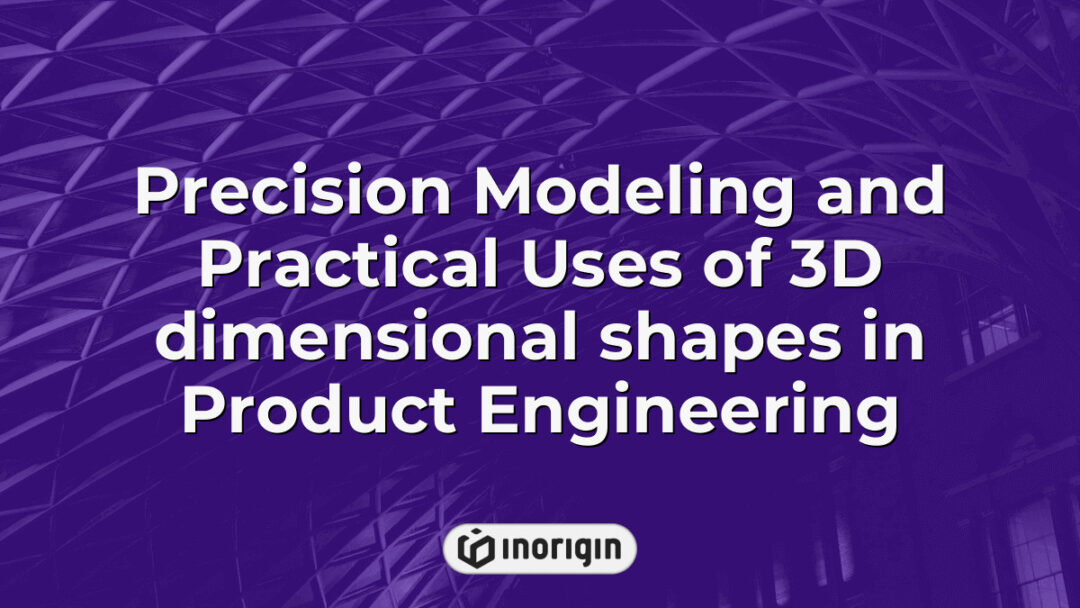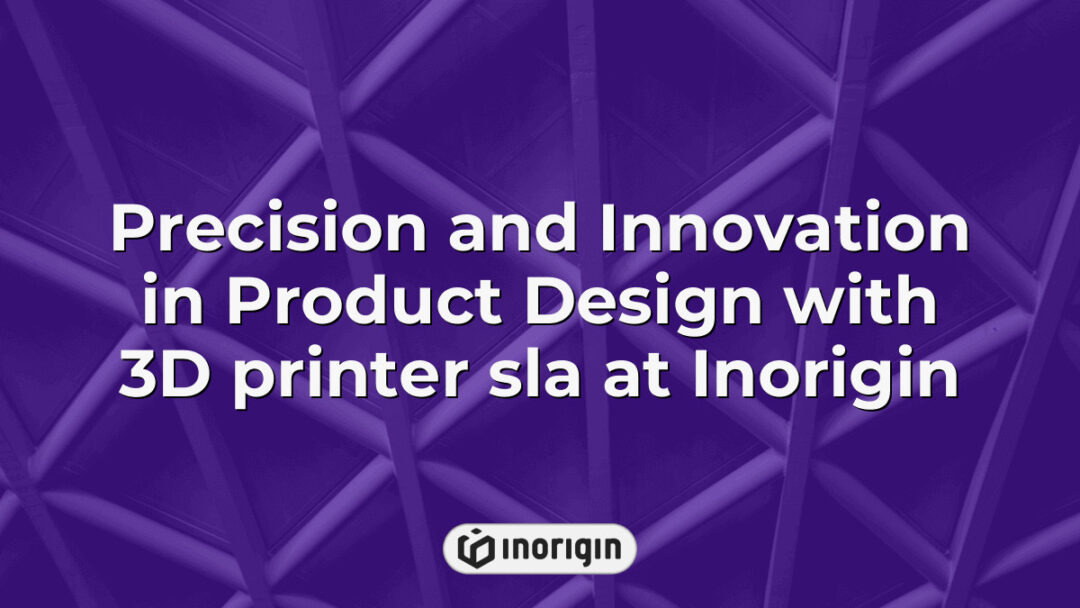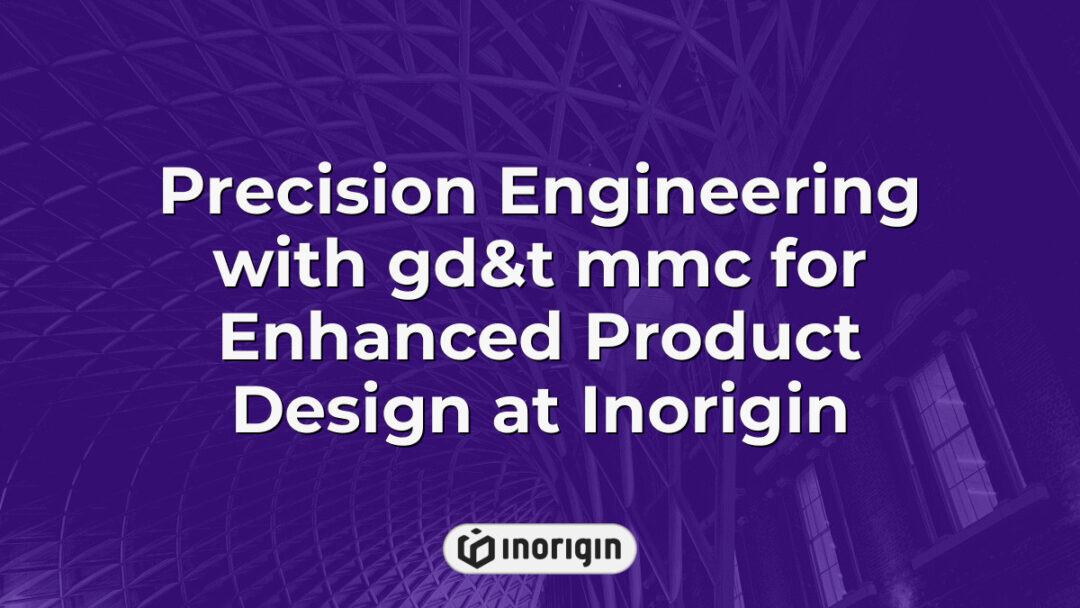The advent of 3D printing technology has revolutionized numerous industries, enabling the rapid prototyping and production of complex geometries previously deemed unattainable by traditional manufacturing methods. This article delves into the diverse categories of 3D printing, each distinguished by its inherent materials, processes, and applications. By categorizing the various techniques—including fused deposition modeling (FDM), stereolithography (SLA), and selective laser sintering (SLS)—a comprehensive understanding emerges of how this transformative technology is reshaping fields such as healthcare, aerospace, automotive design, and consumer products. Such an exploration not only highlights the versatility and efficiency intrinsic to 3D printing but also underscores its potential to drive innovation within contemporary manufacturing paradigms.
| Αποψη | Key Takeaway |
|---|---|
| 3D Printing Categories | 3D printing categories include FDM, SLA, and SLS, each offering distinct materials and processes suited for specialized applications in industries like aerospace and healthcare. |
| Materials and Processes | Material extrusion, powder bed fusion, and vat photopolymerization are the primary material categories that define the capabilities and precision of various 3D printing methods. |
| Εφαρμογές Βιομηχανίας | 3D printing enhances design and production in sectors such as automotive, medical implants, aerospace components, and architectural models with innovative, customized solutions. |
| Desktop vs. Industrial Printers | Desktop printers provide accessible prototyping options, while industrial printers deliver higher precision, material variety, and scale required for professional product development. |
| Αναδυόμενες Τάσεις | Advancements like multi-jet fusion, AI integration, and sustainable materials are transforming 3D printing workflows towards faster, eco-conscious, and more efficient production. |
| Πρακτικές Συντήρησης | Maintaining optimal operation varies with printer type; desktop units need routine cleaning and filament changes, whereas industrial machines require detailed calibration and software updates. |
| Ζητήματα ασφάλειας | Safe 3D printing mandates proper ventilation, use of personal protective equipment, and careful handling of high-temperature components to mitigate health and fire risks. |
Overview Of 3D Printing Technologies
3D printing technology encompasses a variety of methods utilized in additive manufacturing, each with distinct processes and applications. At the forefront is Fused Deposition Modeling (FDM), which employs thermoplastic filaments that are melted and extruded to build objects layer by layer; this technique is particularly favored for its accessibility and versatility. Another significant method within this domain is Digital Light Processing (DLP), which utilizes light to cure liquid resin into solid structures, allowing for faster print times and finer details compared to traditional approaches. Additionally, Selective Laser Sintering (SLS) leverages high-powered lasers to fuse powdered materials together, effectively allowing for complex geometries that would be difficult to achieve with subtractive manufacturing techniques. Each of these technologies highlights the evolving capabilities of 3D printing and underlines its potential across various industries ranging from aerospace to healthcare, thereby underscoring the transformative impact of additive manufacturing on conventional production paradigms.
Υλικά που χρησιμοποιούνται στην τρισδιάστατη εκτύπωση
In the realm of 3D printing, where technology and creativity intersect like a tapestry woven from myriad threads, the choice of materials plays a crucial role in determining the final product’s characteristics. Various categories exist that showcase diverse material properties compatible with different technological processes; among these are three principal types: material extrusion, powder bed fusion, and vat photopolymerisation. Firstly, material extrusion involves thermoplastic filaments heated until they become pliable, allowing for precise layering during the printing process. This method presents advantages such as ease of use and a wide array of filament choices, including polylactic acid (PLA) and acrylonitrile butadiene styrene (ABS). Secondly, powder bed fusion utilizes powdered materials—typically metals or plastics—layered upon one another while selectively fused by lasers or other energy sources; this technique enables complex geometries not achievable through traditional manufacturing methods. Lastly, vat photopolymerisation employs liquid resins cured layer-by-layer by ultraviolet light to create highly detailed objects ideal for applications requiring precision. Each material category offers unique advantages tailored to specific applications, underscoring the importance of selecting appropriate materials to enhance functionality and overall quality of 3D printed items.
Applications Of 3D Printing Across Industries
The applications of 3D printing technology span a multitude of industries, exemplifying its transformative potential in various sectors. Firstly, the aerospace industry utilizes selective laser sintering to produce lightweight components that enhance fuel efficiency while ensuring structural integrity. Similarly, the automotive sector benefits from rapid prototyping capabilities afforded by digital light processing, allowing for iterative designs and accelerated production cycles. Furthermore, the medical field leverages this technology for personalized implants and prosthetics through advanced scanning techniques paired with additive manufacturing processes. Additionally, the architectural realm employs 3D printing for creating detailed models and even constructing entire structures, showcasing its versatility.
- The use of 3D printing in healthcare facilitates patient-specific solutions such as custom surgical guides.
- Aerospace companies are adopting 3D printed parts to reduce material waste and lower costs associated with traditional manufacturing methods.
- The fashion industry is exploring innovative designs through multi-material 3D printing technologies that allow for complex textures and forms.
- Educational institutions have begun integrating 3D printing into curricula to prepare students for future professions in design and engineering.
These diverse applications illustrate how advances in various 3D printing techniques contribute significantly to operational efficiencies and creative possibilities across different fields. As industries continue to explore new avenues enabled by these technologies, the impact of additive manufacturing on productivity, customization, and innovation remains substantial.
Comparison Of Desktop And Industrial 3D Printers
The comparison between desktop and industrial 3D printers is pivotal for understanding the diverse applications of additive manufacturing. Initially, it is essential to examine the characteristics that differentiate these two categories which operate under various specifications of 3D printing technology. Desktop printers typically employ methods such as fused deposition modeling (FDM), making them ideal for individuals or small businesses due to their affordability and ease of use. In contrast, industrial 3D printers frequently utilize advanced techniques like stereolithography (SLA), enabling the production of high-resolution parts with superior material properties suitable for professional applications.
Key distinctions include:
- Cost: Desktop models are significantly less expensive than industrial counterparts.
- Material Variety: Industrial systems offer a wider range of materials including high-performance thermoplastics and resins.
- Print Volume: Industrial machines often have larger build volumes, accommodating more extensive projects.
- Speed and Efficiency: Industrial 3D printers generally provide faster print speeds and improved efficiency for mass production scenarios.
- Quality and Precision: The complexity of designs achievable with SLA in industrial setups results in higher quality outputs compared to most desktop alternatives.
Through this examination, it becomes evident that while both types serve unique roles within the ecosystem of 3D printing technologies, their differing capabilities cater to specific needs across varying settings—from hobbyist environments to large-scale manufacturing operations. Understanding these differences allows businesses and individuals alike to deploy appropriate solutions tailored to their respective requirements effectively.
Μελλοντικές τάσεις στην τρισδιάστατη εκτύπωση
The future of 3D printing technology unfolds with the promise of innovation and transformation, akin to a vibrant tapestry woven from threads of creativity and engineering prowess. Emerging advancements signal not only an enhancement in existing paradigms but also inspire novel applications across various sectors. As industries explore new territories, several key trends are identifiable:
- The proliferation of multi jet fusion technology is poised to revolutionize materials processing by enabling faster production speeds while maintaining high fidelity.
- Material jetting techniques are anticipated to evolve further, allowing for greater complexity in designs and expanding the possibilities for customization.
- Sustainable practices will likely gain traction as eco-friendly materials become more widespread, thereby addressing environmental concerns associated with traditional manufacturing methods.
- Increased integration of artificial intelligence into 3D printing workflows may optimize processes, predict material performance, and enhance overall efficiency.
This convergence of technologies suggests a paradigm shift that could redefine manufacturing landscapes, presenting opportunities for cost reduction and improved product functionality while fostering collaboration between designers and engineers alike. Such developments indicate that the trajectory of 3D printing is not merely progressing; rather, it represents a significant leap towards more adaptive and responsive approaches within industrial ecosystems.
Συχνές Ερωτήσεις
What Are The Typical Costs Associated With Starting A 3D Printing Business?
Starting a 3D printing business entails various costs that can often be underestimated, particularly by newcomers who may perceive the venture as relatively low-cost. However, an in-depth analysis reveals several key financial components essential to establishing a sustainable operation. First and foremost, expenses associated with acquiring high-quality 3D printers can vary significantly; budget models can range from $200 to $5,000, while industrial-grade machines may exceed $100,000. Furthermore, additional costs must also be considered, such as materials for printing—which include filaments or resins—maintenance of equipment, and software licenses necessary for design and production processes. Marketing efforts aimed at attracting clients will incur further expenses related to branding and advertising strategies. Additionally, ongoing operational considerations should incorporate overhead costs including utilities, workspace rental, and labor wages if applicable. As the market landscape evolves rapidly due to technological advancements and fluctuating material prices, creating comprehensive financial projections becomes imperative for aspiring entrepreneurs seeking stability in this dynamic sector. Understanding these multifaceted cost elements not only aids in effective budgeting but also underscores the complexity and potential profitability of diving into the 3D printing industry.
How Do Maintenance Requirements Differ Between Desktop And Industrial 3D Printers?
The maintenance requirements of desktop and industrial 3D printers present a stark contrast, akin to the difference between tending to a household garden and managing an expansive agricultural operation. Desktop 3D printers typically demand minimal upkeep due to their compact design and the generally user-friendly nature of their systems. Regular tasks may include cleaning print heads, lubricating moving parts, and replacing filaments as needed; thus, these responsibilities can often be performed by individuals with little technical background. In comparison, industrial 3D printers require significantly more comprehensive maintenance protocols that are essential for sustaining optimal performance. These machines frequently incorporate advanced technologies and larger production capacities, necessitating routine inspections, calibration adjustments, software updates, and sometimes even specialized training for operators. Furthermore, issues such as material compatibility or equipment wear can lead to lengthy downtimes if not addressed promptly, underscoring the importance of establishing systematic maintenance schedules in professional settings. Therefore, while both categories share fundamental operational needs, the scale and complexity inherent in industrial models engender a more rigorous approach to maintenance than that required for desktop varieties.
What Are The Key Safety Precautions To Take When Using A 3D Printer?
The operation of a 3D printer, while innovative and transformative in numerous applications, necessitates adherence to stringent safety precautions to mitigate potential hazards. Initially, the heat generated by components such as the hotend and heated bed poses a significant risk of burns or fire; therefore, proper handling protocols must be established. It is essential that users maintain an awareness of their surroundings and keep combustible materials at a safe distance from these high-temperature elements. Furthermore, ventilation emerges as a crucial consideration due to the release of fumes during certain printing processes, particularly when utilizing thermoplastics like ABS. Ensuring adequate airflow within the workspace can alleviate inhalation risks associated with volatile organic compounds (VOCs) emitted during extrusion. Additionally, it remains vital to safeguard against electrical hazards; thus, careful inspection of wiring and power supply setups should be standard practice prior to usage. Proper personal protective equipment (PPE), including gloves and goggles, also warrants emphasis in order to shield users from sharp tools employed for post-processing parts or from unintended contact with moving mechanical components. Ultimately, implementing these precautionary measures is imperative not only for individuals operating 3D printers but also for ensuring overall safety within environments where additive manufacturing technologies are utilized.
What Certifications Or Qualifications Are Necessary To Operate Industrial 3D Printers?
The operation of industrial 3D printers necessitates adherence to specific certifications and qualifications, which vary by industry and application. Primarily, operators are often required to possess a high level of technical proficiency, typically validated through formal education in engineering or a related field. Moreover, certification programs endorsed by recognized professional organizations can enhance the credibility and competency of the operator; these may include training on particular printer models or technologies such as additive manufacturing processes. Additionally, familiarity with safety protocols is crucial, as many industrial 3D printing environments involve exposure to potentially hazardous materials. Furthermore, certain regulatory bodies may mandate compliance with industry standards such as ISO (International Organization for Standardization) or ASTM (American Society for Testing and Materials), ensuring that operators understand both operational guidelines and quality assurance processes integral to maintaining product integrity. Hence, acquiring appropriate certifications not only fortifies an operator’s skill set but also ensures alignment with best practices within the rapidly evolving landscape of additive manufacturing technology.
How Does Post-processing Affect The Quality Of 3D Printed Products?
Post-processing plays a crucial role in enhancing the quality of 3D printed products, as it addresses various surface imperfections and material properties that may arise during the additive manufacturing process. Initially, most 3D printed objects exhibit layer lines and rough surfaces due to the nature of deposition techniques; thus, methods such as sanding or chemical smoothing are frequently employed to achieve a more aesthetically pleasing finish. Furthermore, additional treatments like annealing can significantly affect mechanical properties by relieving internal stresses and improving overall durability. Moreover, post-processing techniques also enhance adhesion between layers, which is fundamental for producing components with superior strength and reliability. Consequently, while the initial printing stage establishes the groundwork for product integrity, effective post-processing ultimately determines the suitability of 3D printed items for specific applications in industries ranging from aerospace to healthcare.
Σύναψη
In the realm of innovation, 3D printing emerges as a sculptor shaping industries with precision and artistry. Like an alchemist transmuting base materials into gold, this technology transforms concepts into tangible realities. As advancements unfold, the promise of 3D printing heralds a future where imagination becomes creation, redefining boundaries across sectors.
Σχετικές αναρτήσεις:
- Οι βιομηχανικοί τρισδιάστατοι εκτυπωτές φέρνουν επανάσταση στην κατασκευή με προηγμένα υλικά και μηχανική ακριβείας
- Τεχνικές ανακαλύψεις ακριβείας με έναν βιομηχανικό τρισδιάστατο εκτυπωτή στην Inorigin
- Aditive Manufacturing Advances Driving Precision Engineering and Product Innovation at Inorigin
- Τι είναι η πρόσθετη κατασκευή και ο ρόλος της στον μετασχηματισμό του σχεδιασμού και της μηχανικής προϊόντων
- Industrial label printer Advantages Driving Efficiency in High-Volume Manufacturing Environments
- Additive Manufacturing Transform Product Design and Engineering Through Advanced 3D Printing at Inorigin




